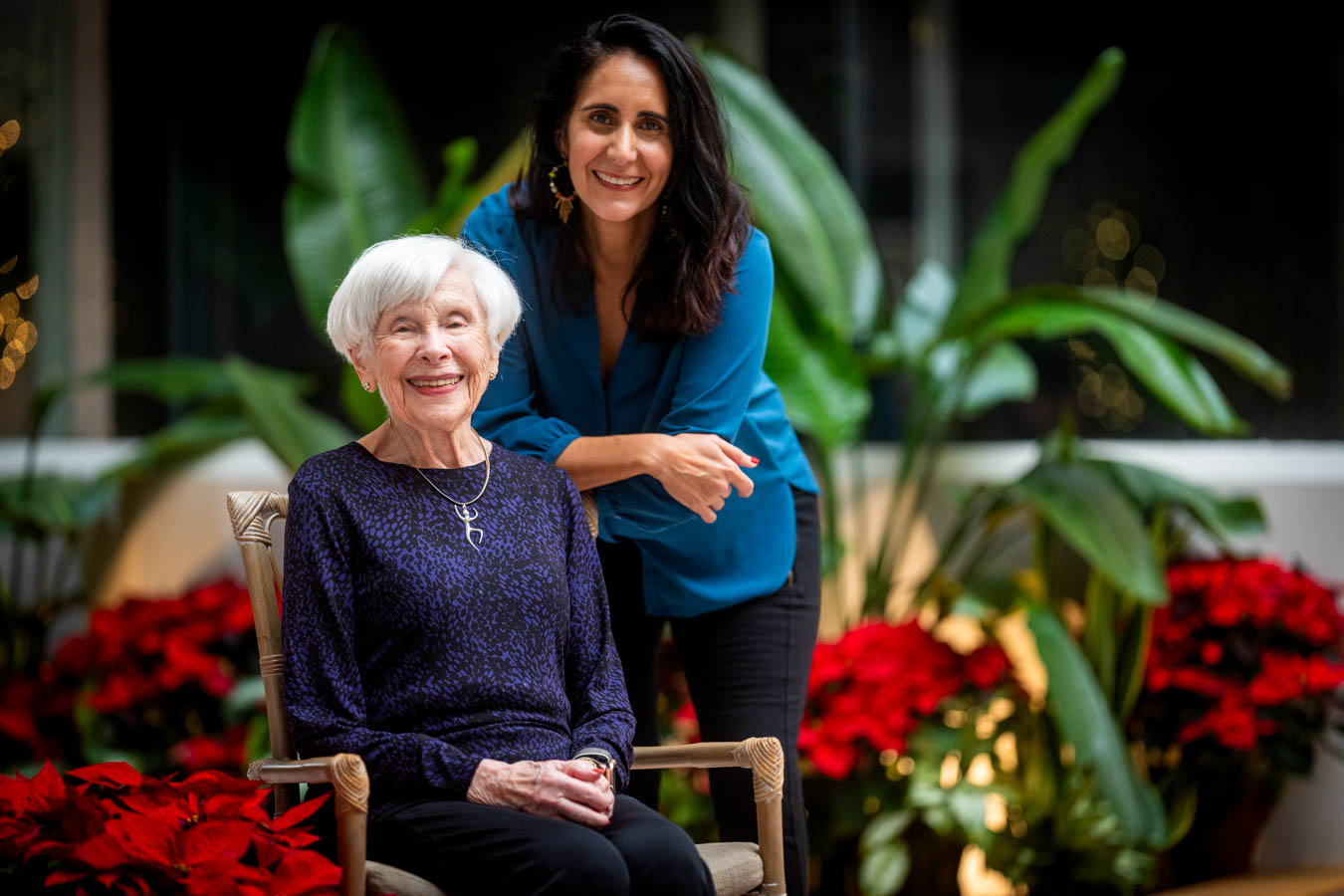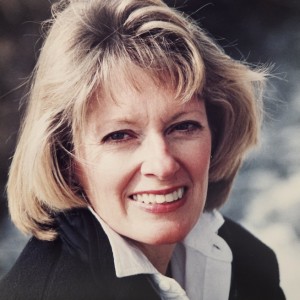Sometimes, it’s about the people who were with you from the beginning. And, for Leymis Bolaños Wilmott, co-founder and artistic director of Sarasota Contemporary Dance (SCD), that means Muriel Gordon Mayers. Mayers, who is in her 90s, is a founding board member of SCD, a lifelong dance educator and a fiduciary accountant. Wilmott and Mayers sat down with SRQ to talk about their journey together and just how instrumental Mayers has been in the growth of SCD.
Tell us about how Muriel initially became involved with Sarasota Contemporary Dance? Leymis Bolaños Wilmott: The company has been around for 18 years, first as Fuzion Dance Artists and then later as Sarasota Contemporary Dance. And, 19 years ago, there was a Martha Graham performance at the Van Wezel. After that performance, there was a talk back, where a gentleman named Nelson Neal said to her, “Hey, there’s a dance company here in Sarasota. Come check it out.” MURIEL GORDON MAYERS: He told me that the company wanted to form a board, and they said, if I didn’t like it, I could get off the next day. And I said, “I can’t do that. I have to go and see what it looks like.” So we went to a rehearsal room and I remember it was this barren place. Leymis: We were rehearsing in a warehouse at the time, yes. MURIEL: Then I saw her choreography and was just blown away by it. It was just brilliant, really brilliant. That’s why I got involved, because there was somebody who was just a brilliant dancer and brilliant choreographer. And, with my experience with all this, I knew what I was seeing was really great. So that was it. I went on the board, where we had a president, vice president and secretary, and I became the treasurer because I also had fiduciary accounting experience. Shortly after, the president and vice president moved away, so I became the de facto president and treasurer. How long did that last, Leymis? Leymis: At least seven or eight years. We had been operating under the banner of Fuzion Dance Artists. After Muriel saw that rehearsal, we created a board and everything became more official. Then, in 2006, Muriel was instrumental in helping us file for nonprofit status and incorporate into Fuzion Dance Artists as a nonprofit 501(c)(3) corporation. Not only was she essentially our entire administrative team, but she managed all the accounting and constantly advocated for us—from writing checks to helping us apply for grants.
What was it about Muriel that made her such a special contributor? LEYMIS: Muriel is someone who understands what it is to be a dancer. She went to college for dance. She has had her own dance studio. Not only does she have a love for dance and an understanding of the work ethic and dedication necessary for a company to succeed, but she has a knowledge of the financial aspect as well. Her experience really helped lay the groundwork for the organizational structure of our company today.
How has SCD grown over the past 18 years? MURIEL: It has grown from a few dancers into a company of dancers and on a payroll. That’s how it’s grown. LEYMIS: It’s grown a lot. We transitioned from having a show once a year to a show twice a year to now a full season, which has been happening for almost a decade now. When we first started, the board consisted of some educators and some people who really appreciated dance, but it was really just a process of gathering people to get behind this vision. As far as dancers, when we first began, we had 12 beautiful company members that we were just paying peanuts.
What are some of your favorite pivotal moments? LEYMIS: A big transition happened when we hired Melissa Coleman as a dancer and administrative assistant in 2013. It was getting to a point in the organization where, between Muriel and me, there was just too much to do. We needed someone to help with the administrative aspect of the company. Melissa’s arrival also enabled us to expand our educational programming. She had experience in education and knew that strong educational programming was how a lot of companies survived. Those programs thrived under her guidance. We also began to downsize the company from 12 or 15 members to around 10, and transitioned from paying them as independent contractors to instead as employees. Do you remember, Muriel, when we transitioned to employees? MURIEL: A board member told us we were going to get in trouble with the IRS because the dancers didn’t fit the mold of independent contractors, so that’s when we had to put them on a payroll. LEYMIS: I think the model that we have as a company is very different from other dance companies, where they put their dancers under a 10-month contract. We pay our dancers hourly. Because our dancers wear other hats for us to survive, it’s important for us to be paying a dancer if they’re going to the storage room to pick up costumes or if someone’s picking up the phone or if someone’s going and posting stuff on social media or doing our newsletters. MURIEL: Or teaching classes. LEYMIS: Or teaching, yes. We’ve had certain board members come in and ask, “Why aren’t they under contract?” But, until we can pay a salary or until we can pay dancers more per hour, it’s a way of advocating for them and their well-being.
What went into the move to the Rosemary District? LEYMIS: We had downsized our company and added some more business-minded people to the board, and then that’s when we decided, “Okay, well if anyone’s going to take us seriously, we need our own space. We can’t keep asking possible donors to be going through the gravel at New College to come watch us for a rehearsal.” So, five years ago, we took a leap of faith and moved into this beautiful space in the Rosemary District, crossing our fingers that we would make rent. It was really a game changer because it aligned us with several arts organizations in the community. There’s the Players Studio and the Sarasota Ballet and the Sarasota Opera all in this arts area, which is really exciting. There’s a lot of growth happening. So, for us, it put us in a place and gave us a home right in the center of what’s happening.
Leymis, what has Muriel meant to you and SCD over the years? LEYMIS: Muriel really has an amazing care for detail. I always say she’s my greatest fan, but she’s also my worst critic. She can be that tough love. She would rave when it was good and, when it was not good, she would tell me. And I needed someone like that, especially in the beginning, where I had the tendency to say, “Oh, everything is great,” because I’m an optimistic person. Muriel would sometimes bring me down to earth and say, “Okay, Leymis, but to be able to do that, we need to have money” or “To be able to do that, you might have to not have that person in that piece because that’s not working out very well.” MURIEL: Because I had studied choreography at the University of Wisconsin. I had an eye for that. And I would say, “Yes, it was too long.” But, at first, I kept my space. I was the fiduciary and she was the dancer. When you came to realize that I had an eye for choreography because I had studied it, you allowed me to come into the dress rehearsals and say, “That costume looks awful. The sides are showing. The flaps should be on.” And so I would put in my two cents or maybe my 10 cents. When I would go and watch company class, they would look at me and see if I approved of it. And that was something I never really wanted. LEYMIS: She didn’t want that power. But they all knew that Muriel was committed to the vision, really cared about the company, respected me and the work that I was doing, and that she had helped start this company. We needed both. Yes, I can be a great artist, but if I don’t have the business knowledge or didn’t have Muriel’s support administratively to do that paperwork the way she did it, all of this could have looked very different. MURIEL: You used to call me your rock, right? LEYMIS: I still do. She’s my rock.










